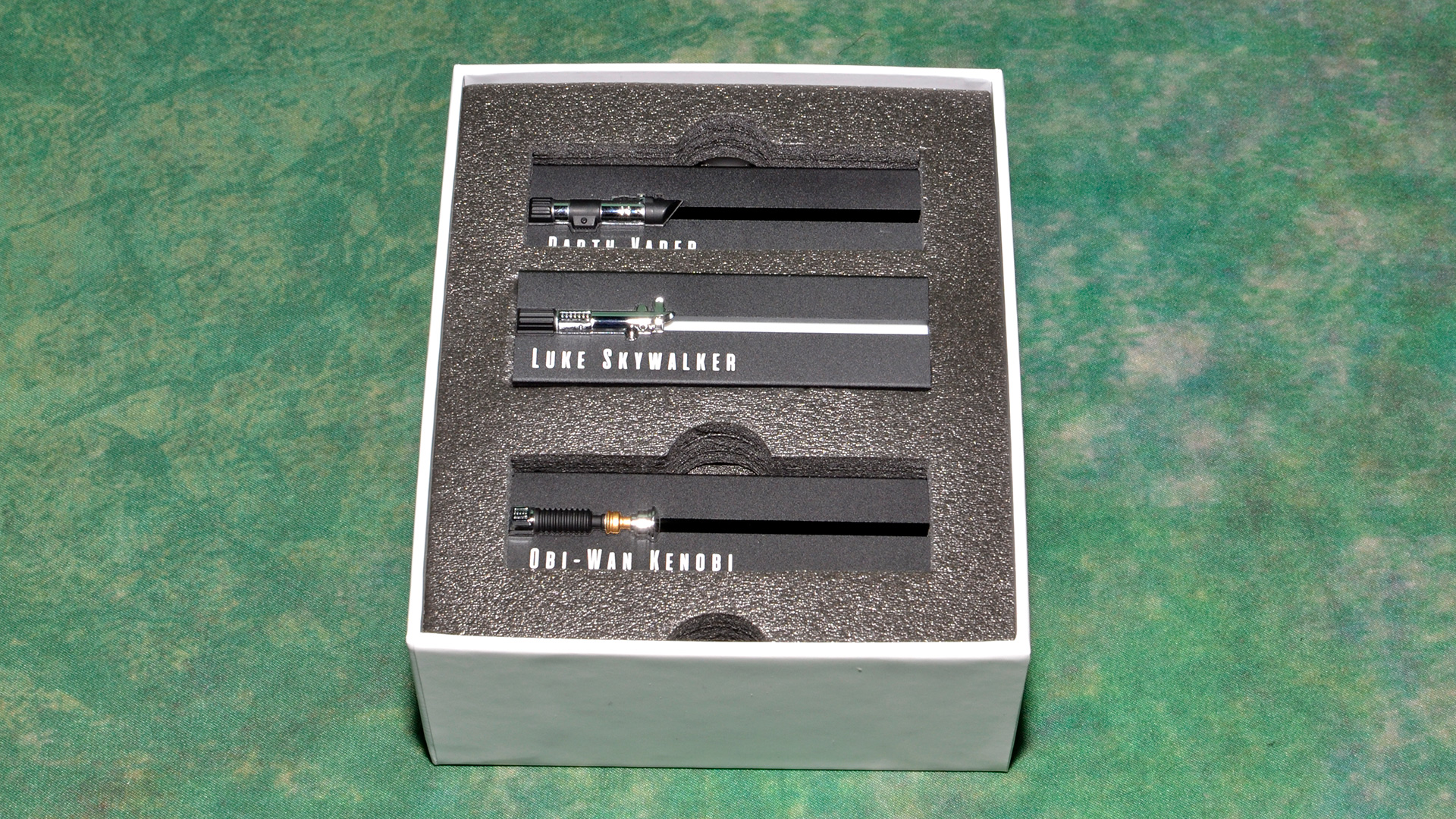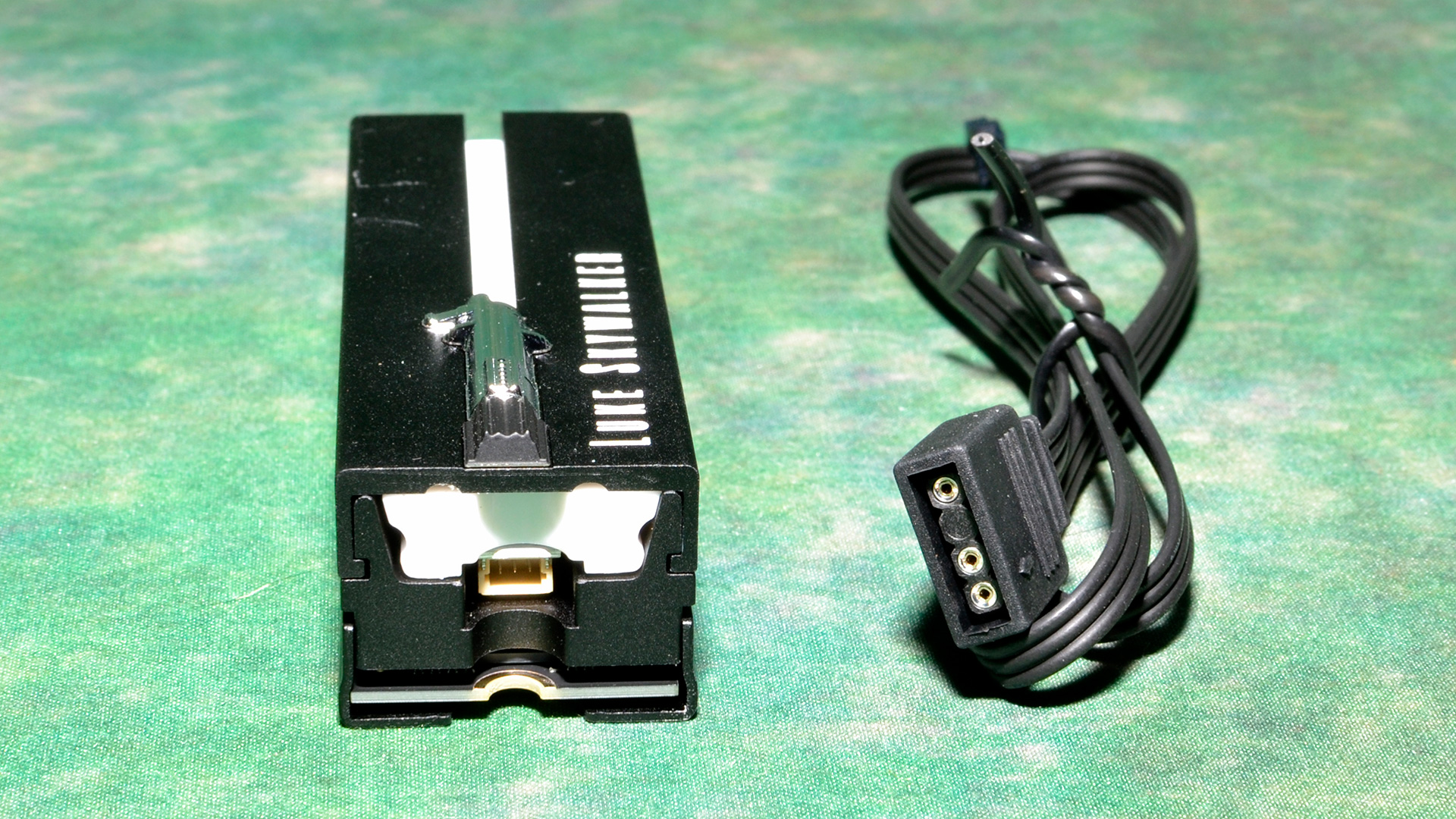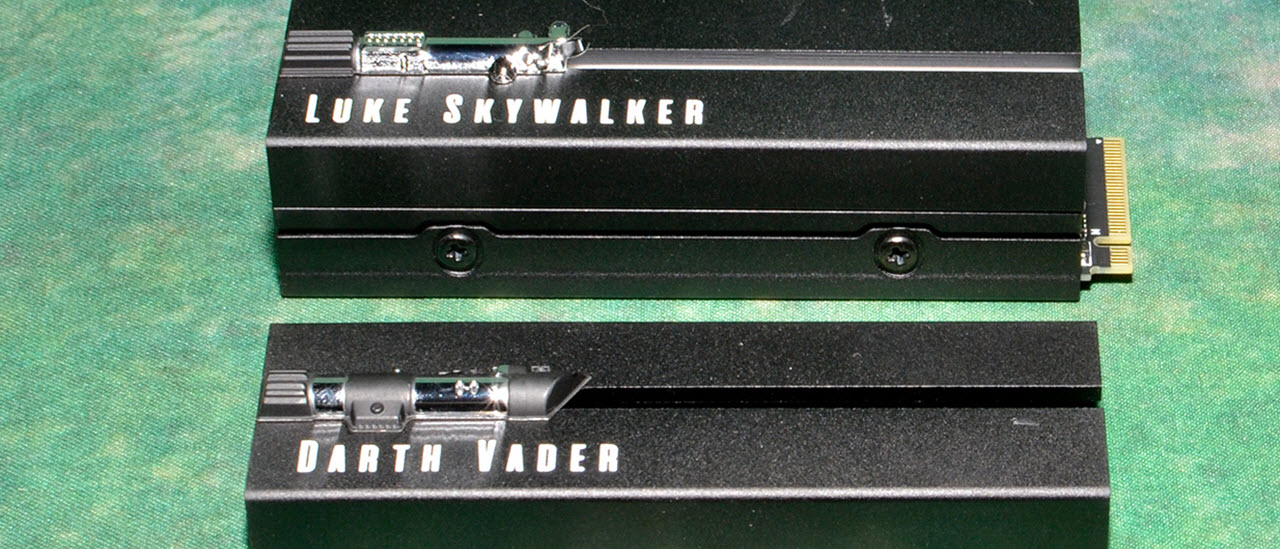Tom's Hardware Verdict
The Seagate FireCuda Lightsaber SSD is a FireCuda 530 in disguise, providing adequate performance for a high-end PCIe 4.0 SSD. Its main selling point is the Star Wars-themed heatsink with switchable ARGB lightsaber faceplates.
Pros
- +
Cool ARGB Star Wars lightsaber with heatsink and faceplates
- +
Good sustained performance
- +
Three-year Data Recovery Service
Cons
- -
Poor availability
- -
All-around performance is mediocre
Why you can trust Tom's Hardware
The Seagate Lightsaber Collection Special Edition FireCuda is the SSD to get for Star Wars fans. A sleek heatsink and switchable heroic lightsaber faceplates are combined with addressable RGB LEDs for an unmistakable look. It’s a potential showpiece for your build, and you can control the lighting through software to match your specific aesthetic. The drive itself is nothing special, but it’s fast enough for any sort of use and has Seagate’s comforting three-year data recovery service to boot, making it a contender for our list of Best SSDs.
Underneath the Seagate Lightsaber FireCuda, as we will henceforth call it, is essentially Seagate’s older FireCuda 530. This drive is known for good performance in sustained workload and is a high-end PCIe 4.0 SSD with a high endurance (TBW) rating. Seagate’s warranty comes with one attempt at data recovery, and they also support the drive with its SeaTools software. That means this drive is a safe bet, even if it’s not the fastest. The challenge would be in acquiring one!
The Lightsaber FireCuda is meant to be shown off, which means it’s intended for desktop use. It arrives with three changeable faceplates and a long ARGB connector cable. The latter can be a pain to work with, depending on your predilections for cable running. The heatsink is functional and designed by EKWB, which matches well with the higher sustained performance. Otherwise, this is a standard FireCuda 530, which is among the more consistent SSDs based on Phison’s E18 SSD controller.
Specifications
| Product | 1TB | 2TB |
|---|---|---|
| Pricing | $159.99 | $239.99 |
| Form Factor | M.2 2280 | M.2 2280 |
| Interface / Protocol | PCIe 4.0 x4 | PCIe 4.0 x4 |
| Controller | Phison E18 | Phison E18 |
| DRAM | DDR4 | DDR4 |
| Flash Memory | 176-Layer Micron TLC | 176-Layer Micron TLC |
| Sequential Read | 7,300 MBps | 7,300 MBps |
| Sequential Write | 6,000 MBps | 6,900 MBps |
| Random Read | 800K | 1,000K |
| Random Write | 1,000K | 1,000K |
| Security | N/A | N/A |
| Endurance (TBW) | 1,275 TBW | 2,550 TBW |
| Dimensions | 80.15mm x 25.0mm x 19.0mm (LxWxH) | 80.15mm x 25.0mm x 19.0mm (LxWxH) |
| Part Number | ZP1000GM30053 | ZP2000GM3A033 |
| Warranty | 5-Year | 5-Year |
The Seagate Lightsaber FireCuda is available at 1TB and 2TB, priced currently around $159.99 and $239.99, respectively. It can be difficult to find these drives, and the price is fairly high for what you get, but if you want the specific aesthetic, it’s not too bad. The drive is fastest at 2TB, hitting 7,300 MBps / 6,900 MBps for sequential reads and writes and 1M / 1M IOPS for random reads and writes.
Seagate warranties this drive for five years and 1,275TB of writes per TB of capacity, which is pretty high. It is not recommended to use the TBW rating when selecting a drive, as even the standard 600TB per TB is an immense amount of writes. Seagate also backs the SSD with its three-year Rescue Data Recovery Services which is nice, although probably more useful for hard drives.
Software and Accessories
The Lightsaber FireCuda comes with the standard manuals and packaged content, including a notice of its Rescue Data Recovery Services. It’s also possible to download SeaTools on Seagate’s site for Windows, Linux, and in a bootable format, which is nice to see. The SeaTools application offers standard monitoring and tools for Seagate’s HDDs and SSDs.
A Closer Look


The Seagate Lightsaber SSD arrives in a comfortable box with three faceplates to use, including those of Obi-Wan Kenobi, Luke Skywalker, and Darth Vader, all officially licensed. Also included is a 40cm, or almost 16”, LED RGB connector cable. This cable lets you control the addressable RGB (ARGB) lightning with a wide array of RGB software applications.
Get Tom's Hardware's best news and in-depth reviews, straight to your inbox.
The drive is clad in an effective heatsink crafted by EKWB, the same company that helped with the Seagate FireCuda 530 that forms the basis of this drive, although the design is different.



The LED bar is thick underneath, but otherwise no surprises. This drive still uses the Phison E18 SSD controller, 176-Layer Micron TLC (B47R), and DDR4 memory. This drive is double-sided with two DRAM and eight NAND packages. It has the standard 2GB of DRAM, and at 2TB, there is an excellent amount of flash for interleaving, so that’s where the drive reaches its peak performance.
MORE: Best SSDs
MORE: Best External SSDs and Hard Drives
MORE: How We Test HDDs And SSDs
MORE: All SSD Content

Shane Downing is a Freelance Reviewer for Tom’s Hardware US, covering consumer storage hardware.
-
-Fran- As you'd be buying these for the appearance first, I would've hoped you could include some pics in the case/motherboard and some shots of how it looks in reality in a system.Reply
In any case, thanks for the benchies as they are quite helpful. I'll stick to recommending the P5+ and 980Pro if they can be found for cheap :D
Regards. -
Alvar "Miles" Udell A special edition licensed product having mediocre performance? That never happens...Reply -
Alvar "Miles" Udell ReplyDr3ams said:As the saying goes...you can put lipstick on a pig, but its's still going to be a pig.
But you can sell that pig for a premium, -
doughillman It's already been said, but how the f do you publish this article without pictures of the actual selling point of these things in action?Reply -
Chappy 1107 Has anyone had any luck on controlling the RGB of this drive? I have it plugged in to a 5V header on my Asus motherboard, but I couldn't get any RGB software to see the drive. It shows up in Windows and the BIOS without an issue, but its just cycling through RGB rainbow vomit, and Seagate support is beyond uselessReply

